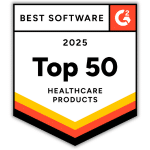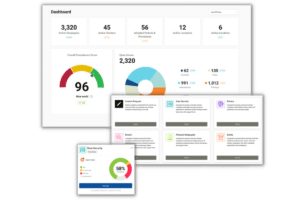Many companies use online form builders, including HIPAA Compliance Forms, to easily gather information from clients or patients. It becomes a simple way to process contact information or manage leads while ensuring compliance with HIPAA regulations.
But when healthcare information is involved, organizations must prioritize HIPAA compliance to protect privileged data captured by these web-forms.
The HIPAA Privacy Rule specifically limits the way that patient data and protected health information (PHI) can be handled, requiring organizations to implement safeguards that maintain the integrity of PHI across their organization.
The HIPAA Security Rule takes these standards a step forward by outlining parameters for the use of electronic PHI (ePHI), which includes all PHI that is stored or accessed electronically. HIPAA-beholden organizations such as covered entities and business associates must uphold strict policies and procedures to ensure that ePHI is being protected.
How to Make Web-Forms HIPAA Compliant
Some of the more popular web-forms on the market include JotForm, Ninja Forms, WuFoo, Gravity Forms, and Contact Form 7. Several of these HIPAA forms online are WordPress plug-ins and extensions that allow users to place web-forms directly onto their site.
So the question becomes: is there any way to use web-forms without breaching HIPAA regulation?
The answer is two-fold. Most times, you won’t find HIPAA compliant web forms, but you can use these services in a manner that conforms to HIPAA regulation.
If you find an online form that is not HIPAA compliant, follow these steps to secure the data that you’re taking in:
- First and foremost: ask your web-form service if they’ll sign a business associate agreement to legally protect your patients’ data.
- If the service allows, make sure that you’re creating encrypted forms. Encryption allows you to keep data more secure. Encrypted web-forms will guard any data entered into them so that they can only be accessed by entering a key. Like any security safeguards, there are different levels of protection depending on the type of encryption in use. Remember that end-to-end encryption is the most secure and should be your preferred choice.
- If your web-form service offers email notifications, make sure that the emails aren’t making use of sensitive data entered by patients or clients. For example, if your web-form automatically notifies the system administrator of all new entries by email, ensure that these notifications don’t include any PHI. Your administrator can then log-on to the service and manually check the data.
- If your web-form service offers composite reports of data, ensure that these reports are guarded by a strong password.
- Regularly download encrypted data, store it on a secure internal server, and then delete the data from the web-form’s servers.
- Always logout of your web-form service when you’ve completed your session.
Keep in mind that, without a business associate agreement in place, your web-form still might not be HIPAA-compliant. Depending on the nature of the information being entered and by whom, you may need to consult a HIPAA subject-matter expert for further guidance on the particular needs of your organization.
By implementing these important privacy and security measures when addressing HIPAA for web-forms, you’re making a step toward protecting patients’ PHI.
To protect your hard-fought reputation and your patients’ rights to privacy, look into a total HIPAA compliance solution for your practice or organization. The best way to eliminate the hassle of day-to-day HIPAA challenges is to become confident in your compliance now.











